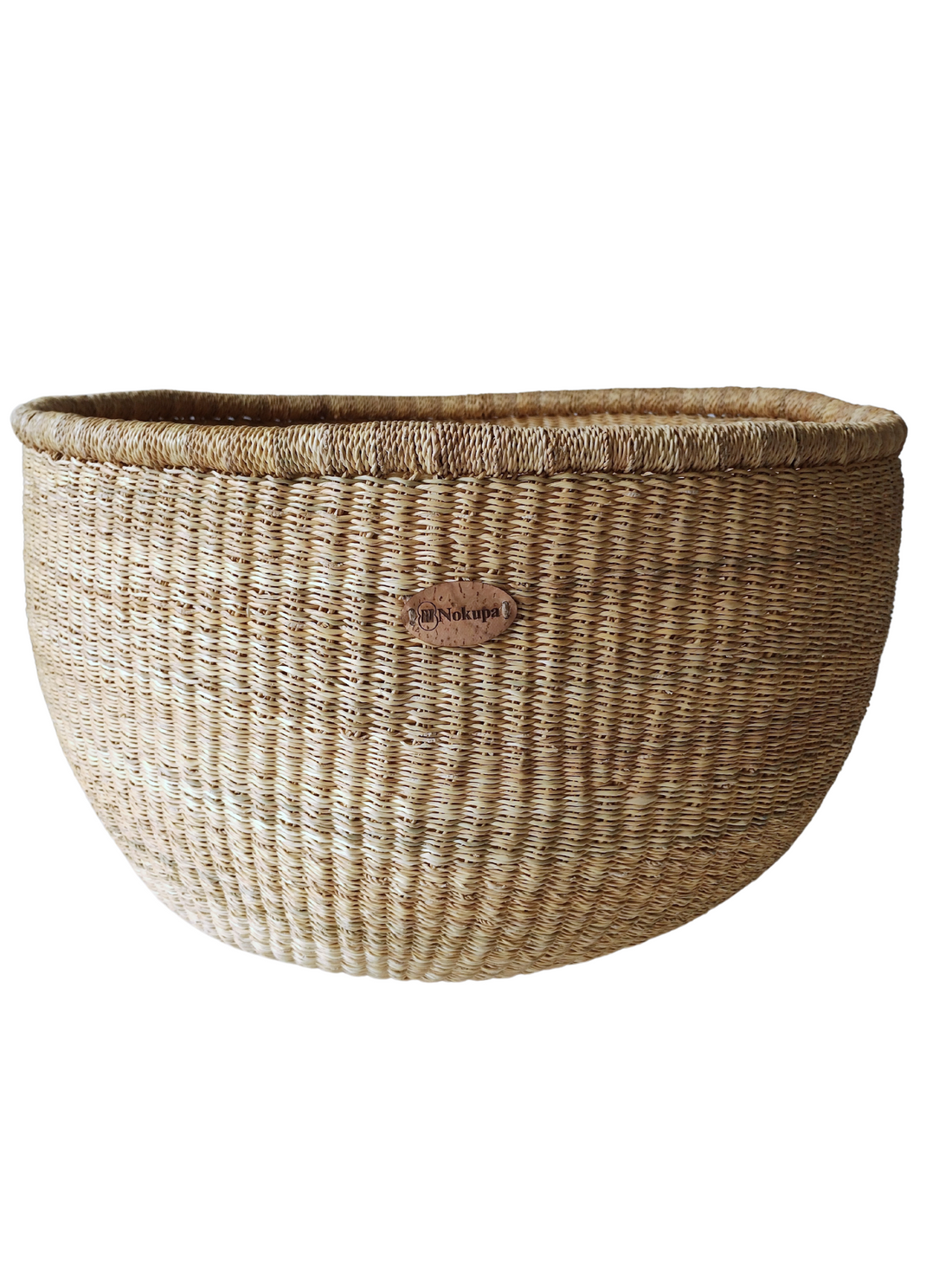Bolga baskets, also known as Bolgatanga baskets, are renowned worldwide for their durability, vibrant colors, and unique designs. Originating from the Bolgatanga region of Ghana, these baskets have become a staple in eco-friendly products and sustainable home décor.
But what exactly are Bolga baskets made of? In this blog post, we will explore the materials that make these baskets so special, focusing on their natural and sustainable components.
This will help you understand why Bolga baskets are a great choice for those looking to add a touch of African craftsmanship to their lives.
The Primary Material: Elephant Grass
At the heart of every Bolga basket is a natural material called elephant grass. Also known as veta vera or vetiver grass, elephant grass is indigenous to the Bolgatanga region.
This tall, sturdy grass is ideal for weaving due to its durability and flexibility. The grass is harvested by hand, typically during the dry season, and then dried under the sun to prepare it for the weaving process.
Harvesting and Preparation of Elephant Grass
The preparation of elephant grass is a crucial step in the basket-making process. After harvesting, the grass is split into thinner strands, making it more pliable for weaving.
The strands are then soaked in water to enhance their flexibility, allowing artisans to weave intricate patterns without breaking the fibers. The drying process not only strengthens the grass but also helps in achieving the desired color vibrancy when dyed.
The Use of Natural Dyes
Bolga baskets are celebrated for their vibrant colors, which are achieved using natural dyes. These dyes are typically derived from local plants, roots, and barks. The artisans mix these natural elements to create a wide range of colors, from deep indigos to bright yellows.
The dyeing process is done carefully to ensure that the colors are long-lasting and resistant to fading, even with regular use.
Sustainability and Eco-Friendliness
One of the key reasons Bolga baskets have gained popularity is their sustainability. Elephant grass is a renewable resource, meaning it can be harvested repeatedly without depleting the environment. Moreover, the use of natural dyes ensures that the baskets are free from harmful chemicals, making them an eco-friendly option for consumers.
By choosing a Bolga basket, you are supporting sustainable practices and contributing to the livelihoods of artisans in Ghana.
The Weaving Process
The weaving of Bolga baskets is a labor-intensive process that requires great skill and patience. Artisans use traditional techniques that have been passed down through generations.
Each basket is handwoven, with the weaver meticulously intertwining the strands of elephant grass to create intricate patterns and designs. This process can take several days, depending on the size and complexity of the basket.
The Final Product
The final product is a beautiful, durable basket that can be used for various purposes, including shopping, storage, and home décor.
Bolga baskets are not just practical; they are also a testament to the rich cultural heritage of the Bolgatanga region. Each basket tells a story, reflecting the artisan’s creativity and the natural beauty of the materials used.
Conclusion
In conclusion, Bolga baskets are made of natural elephant grass and colored using plant-based dyes, making them a sustainable and eco-friendly option for consumers.
The meticulous weaving process and the use of traditional techniques ensure that each basket is not only functional but also a work of art. By purchasing a Bolga basket, you are not only acquiring a beautiful and durable product but also supporting the artisans who continue to keep this rich tradition alive.
Whether you’re looking for a unique addition to your home décor or a practical item for everyday use, Bolga baskets offer a blend of beauty, functionality, and sustainability that is hard to match.

